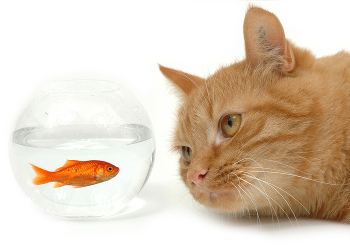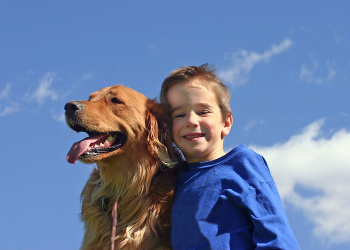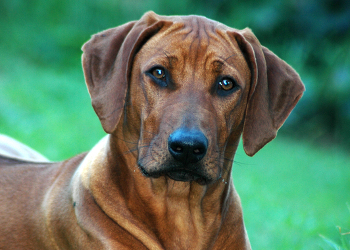Diseases #27

Pemphigus follicaceous is one of several autoimmune diseases that effect the skin of an animal. The cause of the condition is unknown at the time.
In normal situations a foreign antigen (virus for example) enters the body and eventually an antibody is made that protects the animal against future attacks from the same virus. This is good! In autoimmune disease, antibodies are made against cells of the animal's body. This can include any cell type such as red cells. In Pemphigus folliaceous, antibodies are made against the skin.
This form of Pemphigus is the most common of the complex and is associated with the production of scabs, sores and ulcers around the nasal planum (bridge of the nose), distal surfaces of the limb such as foot pads, ears and eyes.
The most common diagnostic lab test is via biopsy of suspected tissue using a biopsy punch. This is sent to a pathology lab for a histopathological diagnosis.
Diagnosis is made by the presentation of clinical signs and a biopsy returned with a histopathological diagnosis of Pemphigus Folliaceous.
This is an autoimmune disease and the immune system has to be quieted. This is accomplished by treating with corticosteroids such as prednisone or prednisolone. Treatment is life long and with long term steroid use, the animal may turn Cushingoid. To minimize this, other imunosuppressive drugs like azathioprine (Imuran®) may be used. Treatment is life long and the goal is to control the immune system to minimize the clinical signs of the disease.
The prognosis for Pemphigus folliaceous depends upon the severity of the disease. Anything that causes damage to the skin should be avoided. For dogs, this would mean minimum exposure of affected areas to the ultraviolet effects of sun exposure.



Pemphigus vulgaris is one of several autoimmune diseases that effect the skin of an animal. The cause of the condition is unknown at the time.
In normal situations a foreign antigen (virus for example) enters the body and eventually an antibody is made that protects the animal against future attacks from the same virus. This is good! In autoimmune disease, antibodies are made against cells of the animal's body. This can include any cell type such as red cells. In Pemphigus vulgaris, antibodies are made against the skin; particularly around mucous membranes.
Clinical signs associated with this disease are found around the mucous membranes of the body. Blisters or sores are found around the female vulva, anus, nostril, eyelids plus around and inside the mouth of the animal.
The most common diagnostic lab test is via biopsy of suspected tissue using a biopsy punch. This is sent to a pathology lab for a histopathological diagnosis.
Diagnosis is made by the presentation of clinical signs and a biopsy returned with a histopathological diagnosis of Pemphigus Vulgaris.
This is an autoimmune disease and the immune system has to be quieted. This is accomplished by treating with corticosteroids such as prednisone or prednisolone. Treatment is life long and with long term steroid use, the animal may turn Cushingoid. To minimize this, other imunosuppressive drugs like azathioprine (Imuran®) may be used. Treatment is life long and the goal is to control the immune system to minimize the clinical signs of the disease.
The prognosis for Pemphigus vulgaris depends upon the severity of the disease. Anything that causes damage to the skin should be avoided. For dogs, this would mean minimum exposure of affected areas to the ultraviolet effects of sun exposure.



The pericardium is the protective glove that surrounds the heart. Inflammation of this layer is known as pericarditis. The most common causes are: blunt trauma to the heart, bacterial (Pasteurella multocida) and fungal (Coccidiomycosis). In cats, causes of pericarditis can be caused by Feline Infectious Peritonitis (FIP), Toxoplasmosis and Cryptococcosis.
The pericardium consists of a thick fibrous layer and a thinner membrane layer that surrounds the heart and protects it. It produces a liquid serum that lubricates the heart so its beating is not impeded by friction. It also protects the heart against potential infectious threats. When this tissue becomes inflamed, it produces excess serum that puts excessive pressure on the heart. This becomes a vicious circle as more liquid leads to more inflammation and so on.
Clinical signs in dogs and cats are related to right sided heart failure. Lethargy and anorexia are general signs of distress but the most crucial finding in right sided failure is ascites; which is the presence of fluid in the abdomen. This puts pressure on the diaphragm making breathing much more difficult. Animals eventually become completely recumbent.
Lab work is geared towards finding a possible cause to the pericarditis. A CBC and Chemistry profile are taken to get an overview of what is happening to organs in the body. Radiographs are taken. The heart silhouette is almost impossible to see due to the inflammation and fluid buildup in the pericardial sac. Cardiac ultrasounds can also be performed. Fluid can be aspirated, with ultrasound guidance, and collected for aerobic (bacteria that need air to live) and anerobic (bacteria that do not need air to live) culture and sensitivity.
Diagnosing of pericarditis is made by historical data and a complete physical exam. Due to the fluid buildup in the pericardial sac, the intensity of the heart sounds are much lower and quite inaudible! Radiographs and cardiac ultrasounds can confirm the diagnosis. The cause may be figured out in the history or culture and sensitivity of the pericardial fluid.
The initial therapy is geared towards stabilizing the patient. This is accomplished by draining fluid out of the pericardial space. This is called pericardiocentesis. This is a serious medical condition and all animals are hospitalized. An intravenous fluid line is inserted and the causative agent is treated. Antibiotics are used for bacterial causes. Antifungals such as ketoconazole are used for fungal diseases. In case of neoplasia, such as hemangiosarcomas, chemotherapy can be instituted. It is CRUCIAL TO REMEMBER, that although signs of right sided heart failure are produced, do not use diuretics such as Lasix® in these patients as it worsens the cardiac tamponade (pressure on the heart). There are some cases where partial surgical excision of the pericardial sac is performed.
The prognosis for pericarditis is guarded. It can reoccur at any given time requiring the same prior treatment. Pericarditis that is secondary to hemangiosarcomas have a poor prognosis. The prognosis improves if the causing agent of the condition is eliminated by medical therapy.



The Pharynx is the back of the throat in man and his companion animals. Inflammation of this area is known as pharyngitis and may also cause inflammation of the tonsils. Common causes in the dog are distemper virus, kennel cough, adenovirus amongst others. In cats any respiratory virus such as rhinotracheitis and calicivirus can cause pharyngitis. Bacterial infection of the pharynx and tonsillar areas also cause the problem.
Dogs have a habit of chewing on countless types of inanimate objects. Getting sticks lodged in the pharynx or any other foreign body can cause oral lesions that can lead to pharyngitis. This can occur in cats but it is much less common than in dogs.
The pharynx is extremely vascular and normally protected by surface IgA secretory antibodies that coat it. This forms a protective barrier against invading organisms. Once that surface barrier is disrupted by foreign bodies or via ulceration of the tissue by viruses and the like, inflammation starts to kick in producing classical clinical signs. The tonsils, lymph tissues, may also get infected.
The most common clinical signs are: difficulty in swallowing food or water, extension of the neck, a hacky cough, gagging and anorexia.
Respiratory signs produced by pharyngitis need to be differentiated from other causes of cough so a CBC and Chemistry profile are performed as well as radiographs to check pulmonary functions. Culture and Sensitivity of throat secretions may show a bacterial cause.
Animals with pharyngitis are in a lot of pain and usually will not let you look in their mouths! Many times, an animal must be sedated to visually inspect the pharynx for the presence of foreign bodies or other objects. The tonsils may be inspected at the same time. Normally, they are hidden in their "crypts" but when infected will pop out of them. Diagnosis can be by visual exam or presentation of clinical signs in the dog or cat.
In the absence of a foreign body or growth, many times the cause of the pharyngitis can not be determined. Most animals are placed on a broad spectrum antibiotic for 2 weeks to treat and or prevent a secondary bacterial infection that could possibly lead to tracheitis or tracheobronchitis. Supportive measures such as nebulization therapy, warm soft foods and cough suppressants will aid in the recovery of the patient. If pharyngitis recurs over and over again, removing the tonsils usually helps. Streptococcus A that causes "strep throat" in humans can be passed to animals but the disease is self limiting in dogs and cats. However, if a human is diagnosed with strept throat, it makes sense to treat all animals in the household for it.
The prognosis for the treatment of pharyngitis in dogs and cat is excellent once treatment has been instituted.



Pneumonia is a serious respiratory disease in dogs and cats. It is so serious, that all animals are hospitalized. It is the inflammation of the lungs but is often associated with bronchopneumonia; which also involves bronchial inflammation. The most common causes of pneumonia in animals are bacterial diseases such as those caused by: Streptococcus sp, Pasteurella multocida, and Pseudomonas sp. Many bacterial pneumonia's in dogs are secondary to viruses such as adenovirus or parainfluenza virus. One of the most commonly seen pneumonia's in young dogs is produced by Bordetella bronchiseptica, the causing agent of "kennel cough" in the dog. Other types of pneumonia are called aspiration pneumonia's. These are produced by the inhalation of food into the lungs via many disease processes such as anesthetic patients waking up and inhaling vomitus after the endotracheal tube has been removed.
Pneumonia causes a severe inflammation in the lung tissues and bronchi. This causes a tremendous amount of viscous mucous that is produced in response to the inflammation. This material clogs the airways all the way up top from the main bronchi, all the way down to the alveoli where oxygenated blood is exchanged at the red cell level. This clogging of the alveoli can lead to local atelectasis; a collapse of the alveolus. As the inflammation continues the lungs become "hepatic like". Instead of the normal elastic tissue seen in the lungs, the lungs take on the texture of the liver. This makes respiration even more labored than before. The animal can not move due to oxygen depletion. Clinical signs arise from this pathophysiology.
The most common signs seen in pneumonia are: fever, anorexia, productive cough & dyspnea (difficult breathing). Some animals will produce a rattling sound in the chest. This is caused by the sound of air passing over mucous in the bronchi. Dogs and cats do not have any exercise tolerance and will often just sit there with open mouth breathing; particularly in cats. Because it is so difficult to breathe, animals can not get comfortable to sleep and will continually shift their body weight or abduct (extend out) their forelimbs making it easier for them to breathe. Some may also have nasal secretions and bilateral conjunctivitis.
Pneumonia patients require lots of lab work. A CBC and Chemistry profile will pick up any white cell elevations secondary to a bacterial infection. The Chemistry profile will profile the internal organs allowing the veterinarian to assess their function. Chest films are always taken to assess the degree of pneumonia. Radiographic signs may be all over (diffuse) or just in a few areas (focal). Bronchiolar infiltration is very easily seen. A "tracheal wash" may be taken to aspirate fluids and secretions in the trachea for culture. This will help to isolate the causing agent of the pneumonia in some cases.
Diagnosis of pneumonia is made by the history and clinical exam. Listening to the chest will produce abnormal sounds such as rales plus other wheezing sounds. The volume of the heart sounds in severe pneumonia will be muffled due to lung consolidation. Because it is so hard to breathe, the animal may present with abdominal respiration. Normally, breathing is "mixed". The chest and abdomen move in tandem at about the same magnitude. In abdominal breathing, chest movement is minimal but abdominal breathing is exaggerated. This is an indirect attempt to move the diaphragm to get more air into the sick lungs. Diagnosis can be confirmed by radiographic findings and the cause (if bacterial) may be found via culture and sensitivity of the tracheal secretions. Aspiration pneumonia needs to be differentiated from straight pneumonia as the clinical signs are very similar. Laryngeal paralysis, cleft palates, history of surgery with intubation are just some of the factors that have to be investigated.
Treatment for pneumonia is done while the animal is hospitalized. The first treatment is cage rest and oxygen therapy, if required. The animal can not and should not move around. Young puppies have to be treated aggressively since their respiratory tract and immune systems are immature and prone to a fomenting bacterial infection that can kill them. An intravenous catheter is placed with fluids. An appropriate antibiotic is administered. Intravenous doses of Baytril® and or oral Clavamox® are usually given together. Some patients may have cephalosporins also administered. One of the most important therapies is nebulization. Animals that breathe in steam vapor, with the drug cocktail that is mixed in, will breathe so much better. This will help the dog to loosen and cough up mucous and phlegm from the bronchi and lungs. This should be done initially at least 4-5 times per day. You do not want to administer cough suppressants with a productive cough. These drugs will suppress the cough reflex allowing mucous and other debris to sit in the lung. This material is a sitting duck for bacterial infections, worsening the pneumonia. When the animal starts to feel better short walks are recommended. This will stimulate the expulsion of mucous and phlegm from the chest.
Calorie intake is also important. Animals are given Nutrical® gel plus Hill's Prescription a/d; which is a high caloric food that aids in the convalescence of many diseases or surgical procedures.
Radiographs are periodically taken to gauge response to therapy. When radiographic signs of pneumonia are clearing and the animal is acting better and eating on its own, it may go home on antibiotics and other supportive care. It is important that the animal be kept as quiet as possible with very little initial exercise. If the animal gets stressed or is too active, the animal may relapse.
The prognosis for straight bacterial pneumonia is very good. Young puppies with pneumonia secondary to Bordetella bronchiseptica receive a guarded prognosis until the lung fields start to clear and the animal begins eating and drinking on its own. Aspiration pneumonia may resolve but is dependent upon the control of the primary cause such as laryngeal paralysis.

